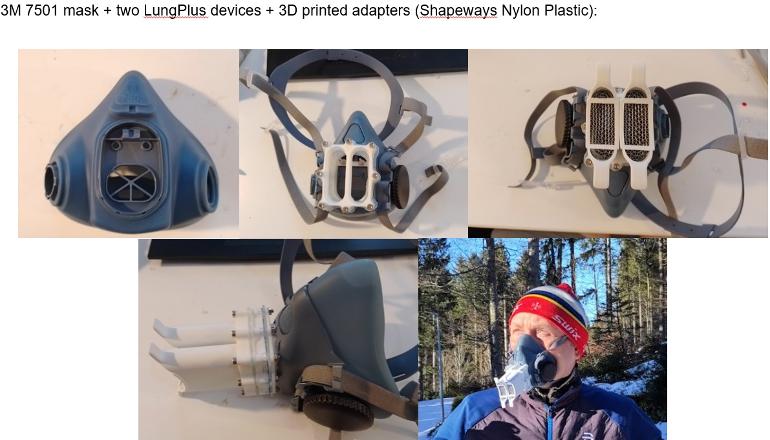Just wanted to share test results of this face mask I made for exercising in the cold weather. It's based on a device called "LungPlus" which I integrated with a 3M respirator using 3D printed parts. The LungPlus is a mouthpiece with an aluminium heat exchanger inside which captures the temperature and the humidity of the air during exhalation, and then warms the air during inhalation.
The inhaled air did feel surprisingly warm even during intense exercise, which is consistent with a 2019 paper shown below (that paper showed warming to +20C at subzero temperatures, and today was +1C). Previously, I wore a scarf or a P2 face mask while exercising in the cold; both restricted breathing and did not warm the air as efficiently as the current mask.
This does not replace inhalers, pills and biologicals, of course -- I still take all of these.
The idea is not new -- I based it on a 1992 paper by a Liverpool lung doctor (linked below). The LungPlus device works by itself but one has to hold it in the mouth at all times which I find uncomofortable, b.c. one cannot breathe through the nose and cannot speak. So I took two LungPluces and connected them to a face mask, and it worked quite well together -- as long as you do not care about the way you look. 
Turns out, there is another device like this on the market, I linked it further down.
2019 paper: pmc.ncbi.nlm.nih.gov/articl...
1992 paper: pubmed.ncbi.nlm.nih.gov/149...
LungPlus device: lungplus.ch/
Swedish mask: airtrim.se/eng/default.asp
